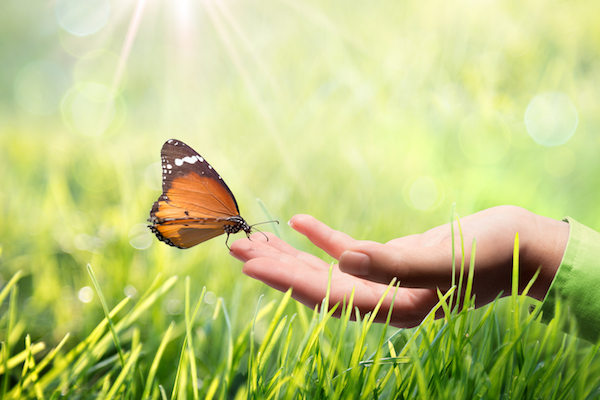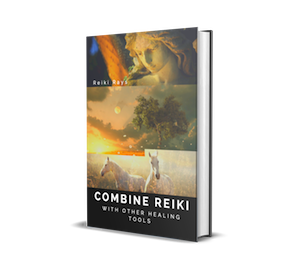Autonomous Sensory Meridian Response or ASMR, has taken YouTube by storm. If you haven’t heard of it, you’ve probably experienced it. ASMR is a pleasurable, tingling sensation on the scalp, sometimes spreading down the neck often caused by soft or whispering voices, quiet repetitive sounds and gentle hand movements, especially on or around the face. Reiki is a known trigger of ASMR and there are many YouTube videos combining distance Reiki with ASMR to help the listener to deeply relax and feel a deep sense of personal attention.
Often referred to as ‘the tingles’, ASMR can also be triggered by the sounds and motions of a haircut or barber and beauty treatments, an eye exam, a massage, the sounds of items being touched or rubbed and the sounds of someone eating food. Perhaps the most famous trigger of all is Bob Ross, the gentle on-screen artist of the 1980s & 90s whose gentle vocal tone and sounds of brush on canvas triggered ASMR in people long before it had a name.
The term of Autonomous Sensory Meridian Response or ASMR, was created by online forum participant, Jennifer Allen in 2010 and was discussed widely on Facebook groups. Allen chose these four words for the following reasons:
Autonomous – spontaneous, self-governing, with or without control
Sensory – pertains to the senses or sensation
Meridian – signifies a peak, climax, or point of highest development
Response – refers to an experience triggered by something external or internal
Dr Richard, Professor of Biopharmaceutical Sciences, owner of asmruniversity.com/ and author of “Brain Tingles” says in his book that ASMR is most often triggered by the receiving of positive, personal attention from a kind and caring individual, which is why ASMR is closely associated with Reiki treatments.
Dr Richard published a brain scan study alongside researchers at Dartmouth College showing the brain areas that are activated during an ASMR video experience are the same brain regions that are stimulated in conversation with a kind and caring person receiving positive and personal attention from someone in the room.

Why does Reiki lend itself so well to stimulating an ASMR reaction?
Dr Richard says;
“Reiki practice contains the core aspects of ASMR triggers and ASMR context; a caring person providing positive personal attention with gentle sounds and light touch. The overlap of reported benefits, such as increased relaxation, decreased stress, pain reduction, and overall well being, could indicate that the benefits of Reiki are actually the benefits of ASMR.”
What medical conditions have benefitted from ASMR?
“There aren’t any clinical trials yet validating the benefits of ASMR for medical conditions, but there are published studies of people self-reporting that ASMR is beneficial to their anxiety, insomnia, depression, and chronic pain.”
What advice would you give to a Reiki practitioner looking to incorporate ASMR into their treatment session to give the best possible experience to their client?
“The more a Reiki practitioner understands ASMR, the better outcomes they may be able to provide to clients. This is because the practice of Reiki mirrors an ASMR context with ASMR triggers. Their caring persona, provision of personal attention, predictable movements, methodical hand motions, light touch, and gentle sounds maybe some of the most important aspects for stimulating deep relaxation and well being in their clients.”
Summary of health benefits data here: asmruniversity.com/health-benefits-of-asmr/
Article by Phoenix Fenegan
Free eBook download: We’ve created an eBook with our best articles on this topic, and offer it for free to all our newsletter subscribers.


Phoenix Fenegan
Phoenix Fenegan is a Reiki Master Teacher, YA 200hrs Yoga Teacher, Meditation Teacher, and spiritual & energy explorer. Phoenix has a YouTube channel called Intuitive Meditations which has many resources for Reiki students and those looking to experience meditation. She is a writer of some note on yoga and spiritual matters which were first published way back in 1997.
You can contact Phoenix through her website: phoenixfenegan.com.




Thank you for the interesting article. About two months before my Holy Fire Karuna training I started feeling this on an almost regular basis each day. Very often it was accompanied with the same tingling sensation i the sixth chakra. As it is now when I read your article. After my Karuna training the tingling in both sixth and seventh chakra has increased even more. Maybe depending on what Karuna stands for? I believe that the tingling is a sign for me that I am “on the right track” when doing something. I feel the tingling strongly when chanelling Reiki.
Love and Reiki
Tomas
Hi Tomas, thanks for taking the time to share your experiences, our intuitive thoughts about the ‘tingles’ are usually very accurate. Best wishes for your continued expansion into your Reiki. Love, Phoenix